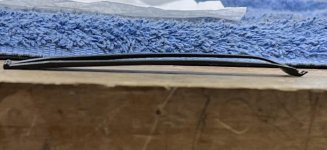My recently acquired 18-4 had a hitch in double action pull.
I found the mainspring binds up on the grip screw before the strain screw is all the way home. Note how the mainspring overlaps the grip screw in the pic attached.
I checked my 17-4 and 17-3, and they have the same issue.
Is there something different in the rimfire hammer geometry that causes this? I've never seen this in any of my center fire revolvers.
I can back off the strain screw and check double action ignition with a lighter hammer fall, and then shorten the strain screws if I have reliable ignition, but my chambers are too tight to even load the guns at present.
I've ordered a Manson finisher cylinder reamer, but it won't be here until July.
Have any of you encountered this, and what have you done to fix it?
I found the mainspring binds up on the grip screw before the strain screw is all the way home. Note how the mainspring overlaps the grip screw in the pic attached.
I checked my 17-4 and 17-3, and they have the same issue.
Is there something different in the rimfire hammer geometry that causes this? I've never seen this in any of my center fire revolvers.
I can back off the strain screw and check double action ignition with a lighter hammer fall, and then shorten the strain screws if I have reliable ignition, but my chambers are too tight to even load the guns at present.
I've ordered a Manson finisher cylinder reamer, but it won't be here until July.
Have any of you encountered this, and what have you done to fix it?


